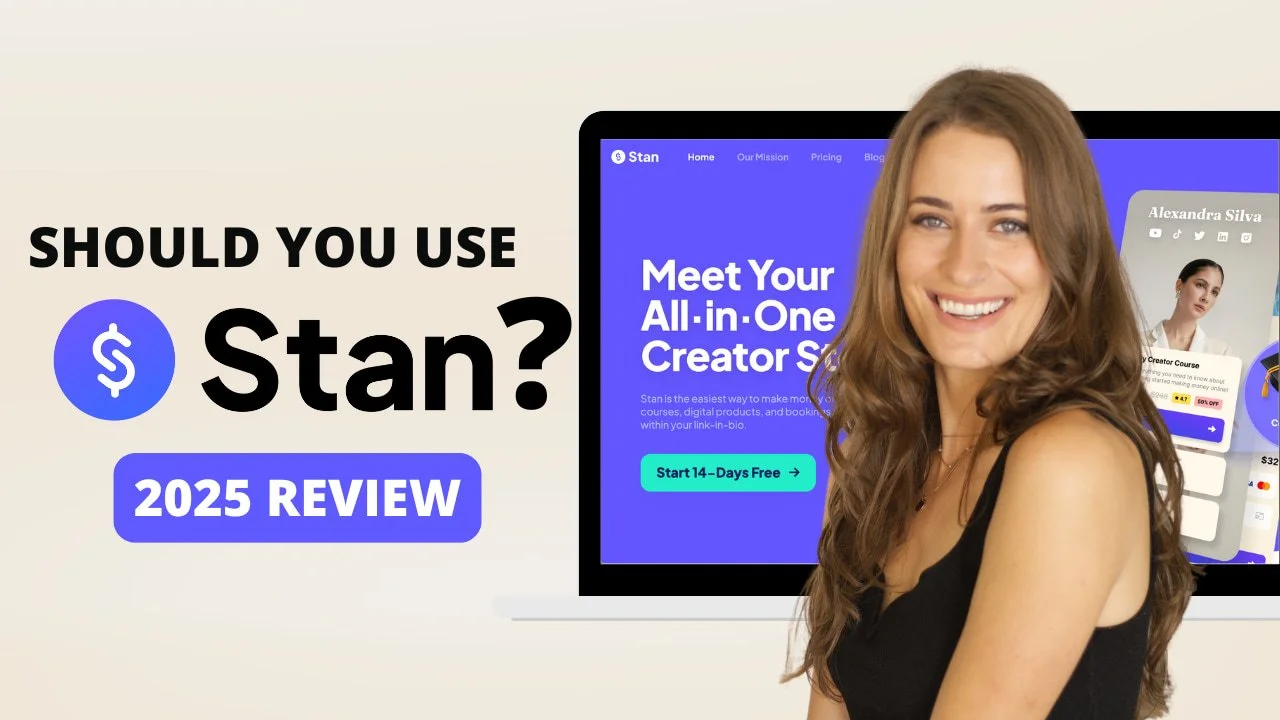My Online Course Business Explained (& How You Can Do It Too!)
Heads up: I use affiliate links for my fave products. If you click and purchase, I may receive a small commission at no extra cost to you.
I'm breaking down my online course business! Here's what is involved, the good, the bad and how you can create an online course business too 🙌
Hit play or read the post below:
The Good & The Bad of the Online Course Business Model
One of the biggest perks of this type of business is the flexibility. It’s completely remote, which means I can work from anywhere in the world. Over the years, I’ve lived in Bali and Mexico, traveled through countless countries, and eventually settled in Panama.
Even within Panama, I often take weekends away in little surf towns, working from cozy cafés with my laptop and a latte. This change of scenery keeps me inspired and energized.
As long as you have your laptop and an internet connection, you can work from anywhere. That said, reliable internet is a must – especially if you need to take calls.
Another thing I love? Compared to one-on-one coaching or high-ticket group programs, online courses require far fewer live calls. This gives you a lot more control over your schedule.
Here’s the real magic:
You’re taking your knowledge and turning it into a product – your online course.
Your involvement in delivering it can be minimal, especially if you design it as a self-study program.
This means you can create flexibility in your life, take breaks when you need them, and even enjoy the occasional mental health day without disrupting your income.
But let’s be real: creating an online course is a lot of work upfront. At the start, you’ll likely be doing everything yourself. Over time, it gets easier as you build a team and outsource tasks.
I think of courses as digital assets. Once you’ve created one, you can sell it for years to come without having to constantly create new offers. That’s why I believe the upfront work is worth it – you’re building something that can support your business and lifestyle for years, while also genuinely helping people achieve a transformation.
Step 1: Coming Up With Your Idea
Your course should be based on your expertise and skills – something that can help others achieve a result you’ve gotten for yourself or for clients.
If you’re not sure what that is yet, focus on developing a skill first. But remember: most people underestimate their expertise because they think what they know is “obvious.” It’s usually not.
When I created my first course, I noticed everyone was teaching WordPress and making it overly complicated. I had mastered building Squarespace websites quickly and simply, so I built Website That Wows to help people create their own client-attracting site without the tech overwhelm.
I’ve repeated this process many times:
Needed better systems in my business? Built them in Asana → Turned it into Uplevel with Asana.
Learned the simplest way to run an online course business? → Turned it into Passive Profit Accelerator.
Once you know this process, you can keep doing it again and again.
Step 2: Sharing Free Content
Once you’ve decided on your course topic, start sharing free content on it. This builds visibility and positions you as the go-to person on the subject.
I’m partial to YouTube because of the SEO benefits and long-term reach – videos you create today can keep working for you for years. But I also post on Instagram to expand my reach.
Free content is how you meet your ideal audience – the ones actively looking for the knowledge you share.
Step 3: Growing Your Email List
Free content is great, but you also want a way to keep in touch with your audience directly. That’s where an email list comes in.
Offer a valuable freebie – like a training or resource – in exchange for someone’s email address. This lets you follow up with them and eventually invite them to join your course.
Growing your email list is one of the most important priorities in this business, and it’s closely tied to your sales results.
Step 4: Bringing In Sales
I bring in course sales in two main ways:
1. Sales Funnels
An automated email sequence connected to your freebie, offering a limited-time invitation to join your course. This is the “passive” side of the business – sales happen while I’m sleeping, at the beach, or on a road trip.
2. Launches
These are more public, active promotions, and I recommend doing at least one per quarter. Not everyone will find their way into your sales funnel, so launches give your audience another chance to join your program.
My Focus as an Online Course Business Owner
Most of my energy goes into:
Creating high-quality courses that deliver results and get rave testimonials.
Publishing free content to grow visibility on my course topic.
Building my email list to connect directly with my audience.
Maintaining sales funnels so they’re always running smoothly.
Running quarterly launches to create buzz and boost sales.
Alongside this, I’m always implementing systems and streamlining my business so I can work less, have more freedom, and bring in help when needed.
Final Thoughts
Running an online course business is incredibly rewarding. It takes work upfront, but the payoff is the freedom, flexibility, and the ability to genuinely help others.
If you’re ready to create your course, click here to join my upcoming FREE Course Creation Bootcamp. Can’t wait to see you there!



![8 Simple Productivity Habits 🍃 [Working From Home Tips]](https://images.squarespace-cdn.com/content/v1/5696066f1115e0e4e3059106/1754827471549-ZKNAPAMQKEENQ4EBZ8IG/simple-productivity-habits-thumbnail.jpg)



![Kajabi Review 2025 - What You Need to Know Before You Buy! [Kajabi Pros & Cons]](https://images.squarespace-cdn.com/content/v1/5696066f1115e0e4e3059106/1747073445742-LIZROCCY37VZHY8DRA4K/Kajabi-review-2025-thumbnail.png)

In this video, I’ll show you step-by-step how to capture emails directly inside Instagram DMs using Manychat - no landing page required 🤯